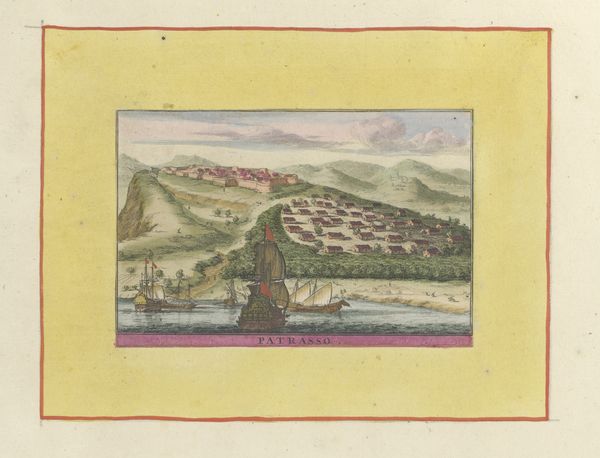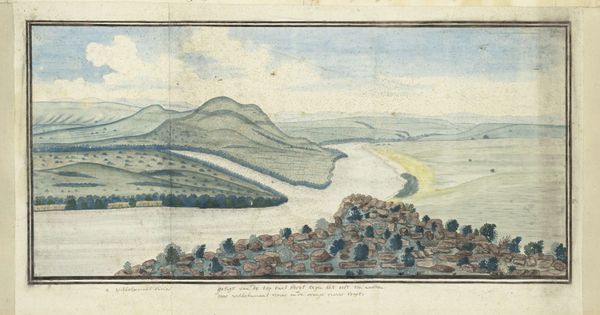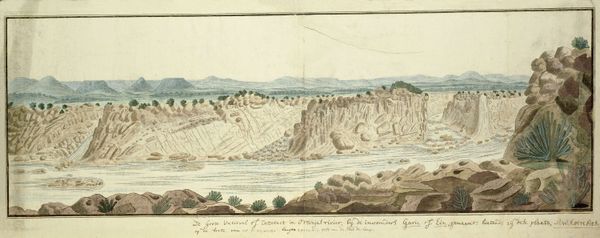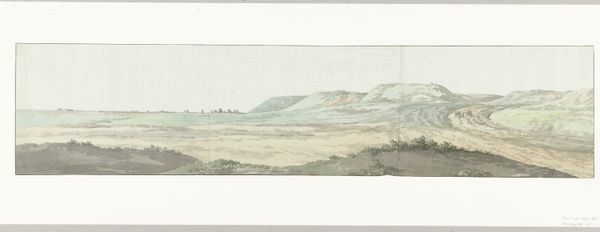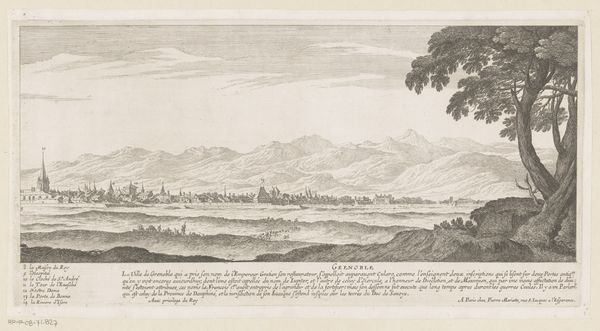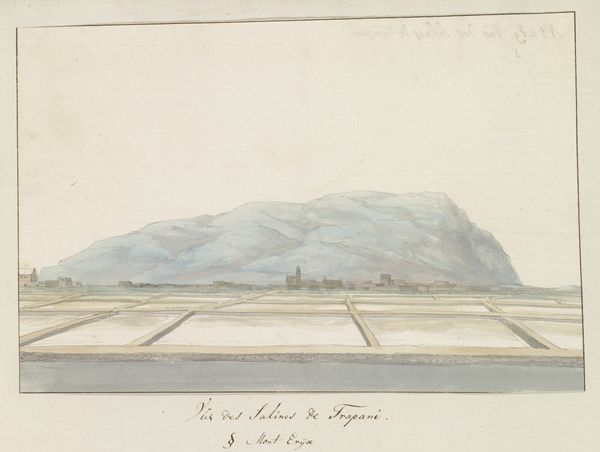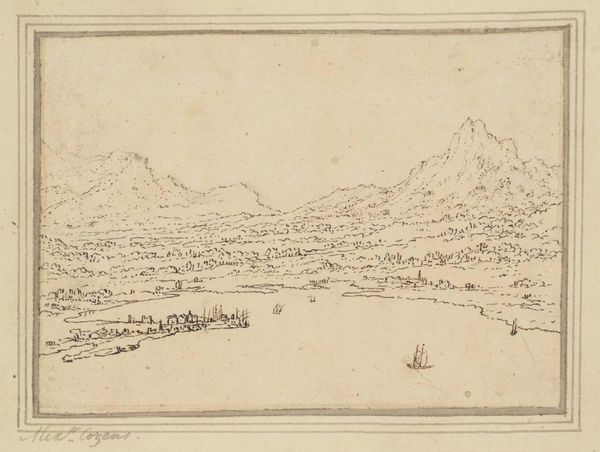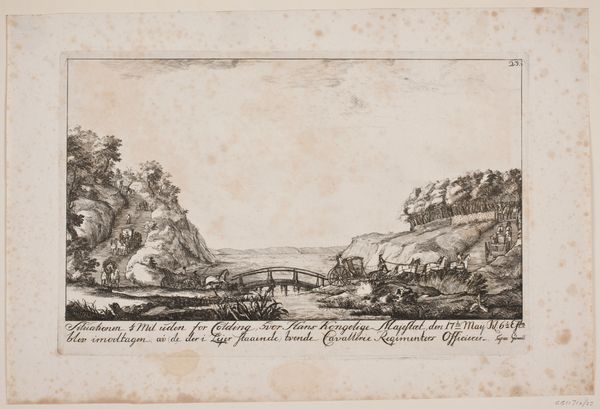
The Koperberge, near the contemporary Springbok, in little Namaqualand Possibly 1779 - 1781
0:00
0:00
Dimensions: height 160 mm, width 600 mm
Copyright: Rijks Museum: Open Domain
Curator: Before us is Robert Jacob Gordon's rendering of "The Koperberge, near the contemporary Springbok, in little Namaqualand," likely created between 1779 and 1781. It employs ink and watercolor to capture this South African landscape. What strikes you upon first glance? Editor: There’s a certain deliberate quality to the arrangement of the hills and foliage. It evokes a sense of balance but also stillness; the muted watercolor palette lends an overall feeling of calm observation. Curator: Indeed. Given Gordon's role as a military commander and explorer for the Dutch East India Company, this wasn't mere artistic indulgence. Consider the context: he documented the landscape, its resources, and its people, information that held considerable economic and strategic value for the Company. This romanticized depiction, through ink and watercolor, became a form of colonial knowledge production. Editor: I see your point, but aesthetically speaking, observe how Gordon structures the image. He establishes a clear foreground, middle ground, and background, using linear perspective to lead the eye into the distance. The arrangement creates depth and establishes the spatial relationships of the elements represented. Curator: Agreed. However, the execution style reveals how art supported colonial projects through very practical means. Gordon wasn't solely expressing himself. The detailed rendering of specific geological features, water sources, and potential agricultural areas offered quantifiable resources that aided Dutch interests in exploiting this area, transforming this vista into a resource map. Editor: While the painting functions as an objective report, its emotional impact derives precisely from its subjective rendering. The specific selection of muted tones of watercolor combined with detailed brushstrokes communicate something beyond mere data. The delicate way he handled the medium allows the viewer to interpret an experience of place. Curator: Certainly, the artwork holds layered meanings. Seeing beyond the surface and recognizing how visual culture intersects with and enables tangible power structures is essential here. Editor: Ultimately, Gordon offers us an understanding of landscape filtered through the tools and knowledge of a man caught between scientific observation and artistic creation.
Comments
No comments
Be the first to comment and join the conversation on the ultimate creative platform.

